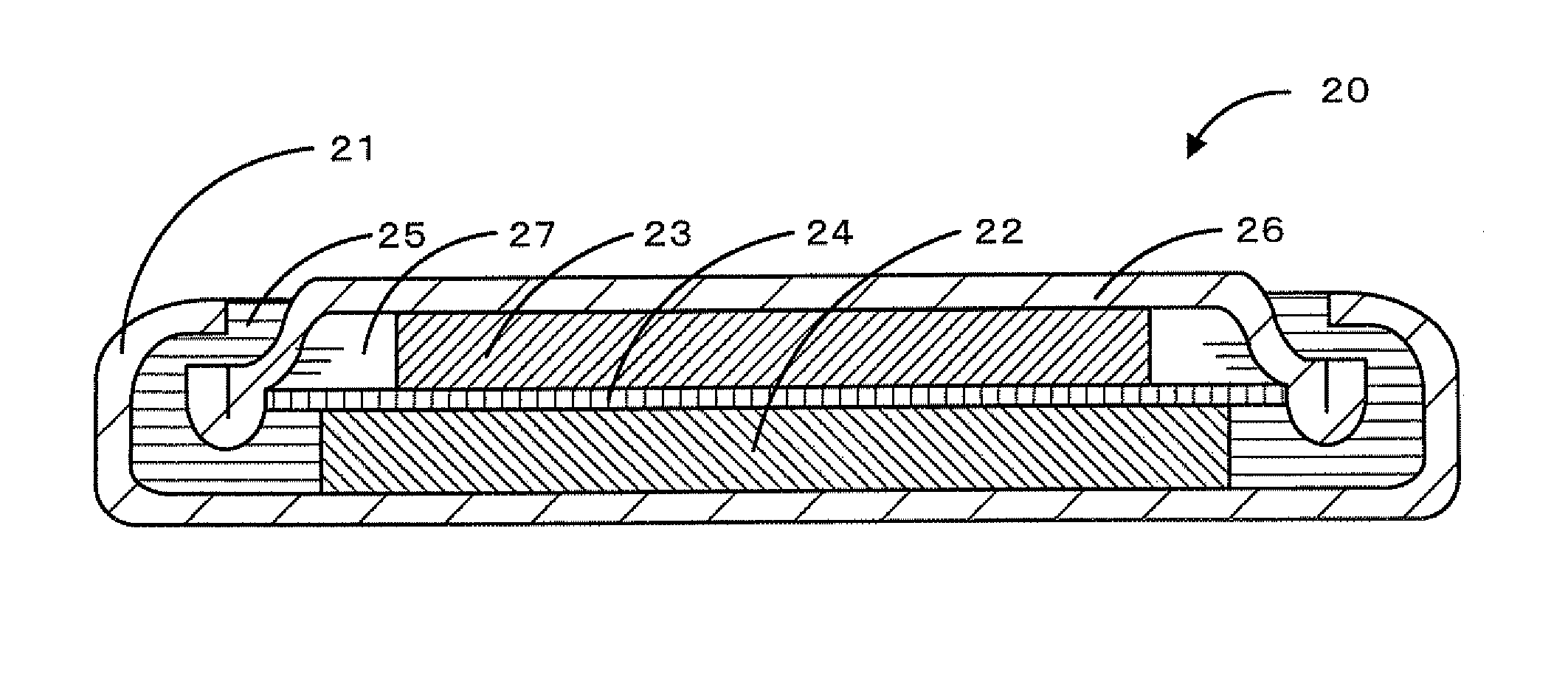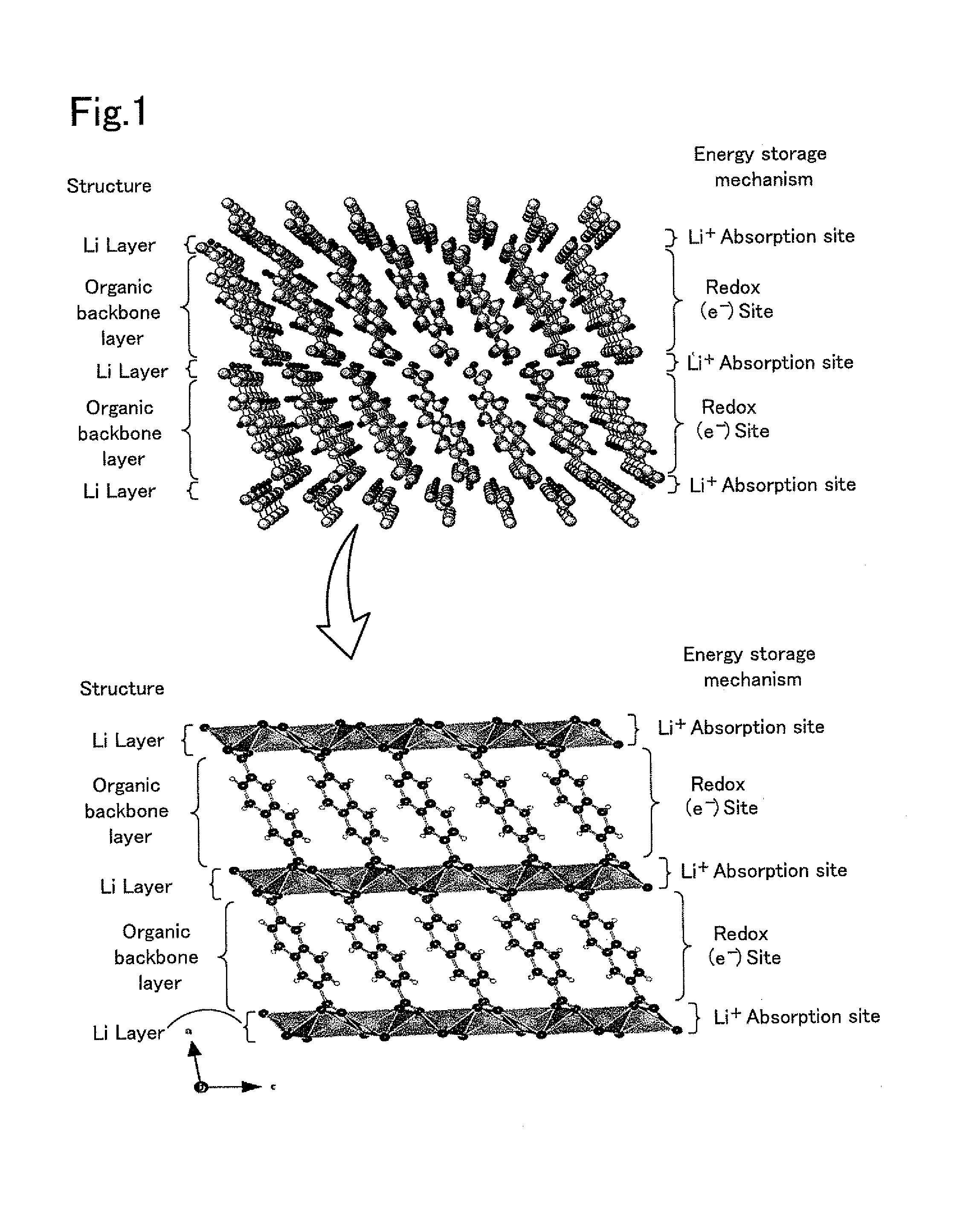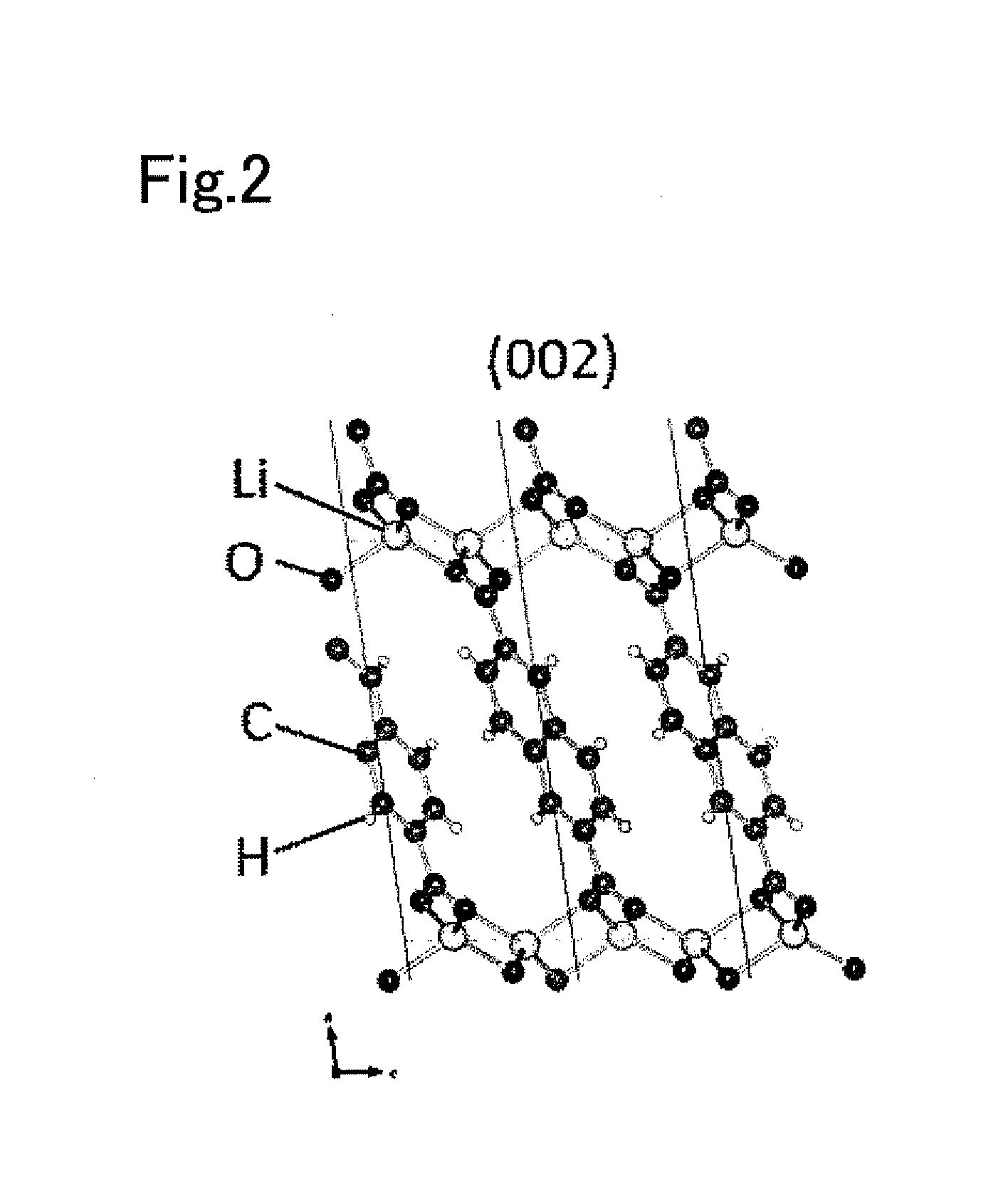Electrode active material, nonaqueous secondary battery electrode, and nonaqueous secondary battery
- Summary
- Abstract
- Description
- Claims
- Application Information
AI Technical Summary
Benefits of technology
Problems solved by technology
Method used
Image
Examples
Example
Experimental Example 1
[0054]Lithium 2,6-naphthalenedicarboxylate was synthesized as a layered composition shown in FIG. 1. The lithium 2,6-naphthalenedicarboxylate was a layered composition including organic backbone layers having the basic structure represented by formula (4) below. The starting materials used for synthesis of the lithium 2,6-naphthalenedicarboxylate were 2,6-naphthalenedicarboxylic acid and lithium hydroxide monohydrate (LiOH—H2O). First, 100 mL of methanol was added to 0.556 g of lithium hydroxide monohydrate, and it was stirred. After the lithium hydroxide monohydrate was dissolved, 1.0 g of 2,6-naphthalenedicarboxylic acid was added, and it was stirred for one hour. After stirring, the solvent was removed, and the residue was dried in vacuo at 150° C. for 16 hours to yield a white powder sample. The resulting white powder sample is referred to as an active material powder of Experimental Example 1.
[0055]Fabrication of Coated Electrode
[0056]A nonaqueous secondar...
Example
Experimental Example 2
[0059]A white powder sample was yielded as an active material powder of Experimental Example 2 by repeating the procedure of Experimental Example 1 except that lithium terephthalate was synthesized instead of the lithium 2,6-naphthalenedicarboxylate of Experimental. Example 1. This active material was a layered composition including organic backbone layers having the basic structure represented by formula (5) below. Also, a nonaqueous secondary battery electrode of Experimental Example 2 was fabricated by repeating the procedure of Experimental Example 1 using the active material powder of Experimental Example 2, and a bipolar test cell was fabricated using the nonaqueous secondary battery electrode of Experimental Example 2.
Example
Experimental Example 3
[0060]A white powder sample was yielded as an active material powder of Experimental Example 3 by repeating the procedure of Experimental Example 1 except that lithium 2,3-naphthalenedicarboxylate was synthesized instead of the lithium 2,6-naphthalenedicarboxylate of Experimental Example 1. This active material, described in detail later, did not form a layered composition and was a compound having formula (6) below. Also, a nonaqueous secondary battery electrode of Experimental Example 3 was fabricated by repeating the procedure of Experimental Example 1 using the active material powder of Experimental Example 3, and a bipolar test cell was fabricated using the nonaqueous secondary battery electrode of Experimental Example 3.
[0061](X-Ray Diffraction Measurement)
[0062]Powdered X-ray diffraction measurement was performed on the active material powders of Experimental Examples 1 to 3. In the measurement, the Cu—Kα line (wavelength: 1.54051 Å) was used as radiatio...
PUM
 Login to View More
Login to View More Abstract
Description
Claims
Application Information
 Login to View More
Login to View More - R&D Engineer
- R&D Manager
- IP Professional
- Industry Leading Data Capabilities
- Powerful AI technology
- Patent DNA Extraction
Browse by: Latest US Patents, China's latest patents, Technical Efficacy Thesaurus, Application Domain, Technology Topic, Popular Technical Reports.
© 2024 PatSnap. All rights reserved.Legal|Privacy policy|Modern Slavery Act Transparency Statement|Sitemap|About US| Contact US: help@patsnap.com










